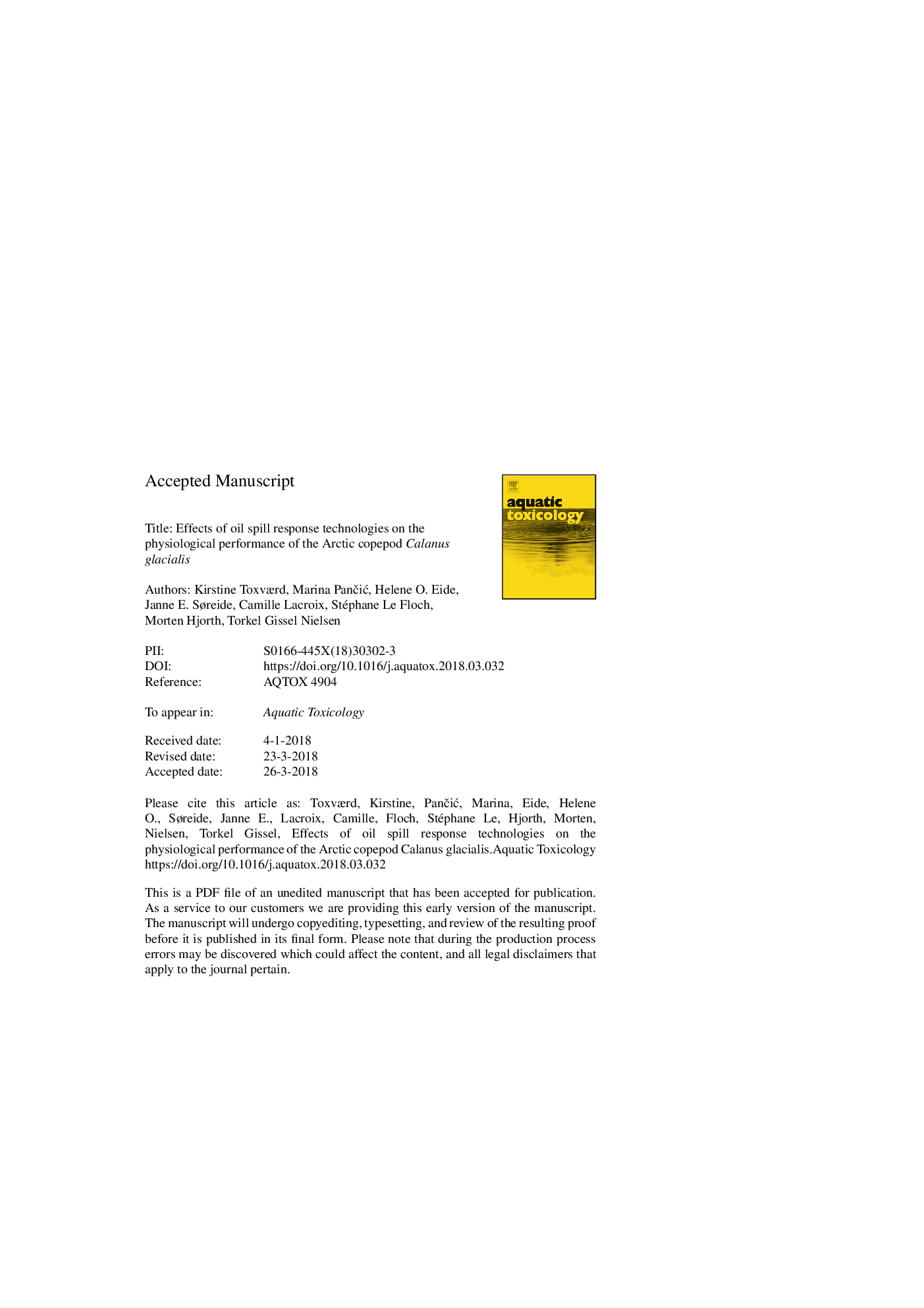| کد مقاله | کد نشریه | سال انتشار | مقاله انگلیسی | نسخه تمام متن |
|---|---|---|---|---|
| 8883736 | 1625906 | 2018 | 41 صفحه PDF | دانلود رایگان |
عنوان انگلیسی مقاله ISI
Effects of oil spill response technologies on the physiological performance of the Arctic copepod Calanus glacialis
دانلود مقاله + سفارش ترجمه
دانلود مقاله ISI انگلیسی
رایگان برای ایرانیان
کلمات کلیدی
PAHISBNATTOSRDispNaupliiFSWSEPMesocosmsSPPfiltered seawater - آب دریا فیلتر شدهEgg production - تولید تخم مرغIn situ burning - سوزاندن در محلSiMA - صافNatural attenuation - ضعف طبیعیPolycyclic aromatic hydrocarbon - هیدروکربن آروماتیک چند حلقه ایOil spill response - پاسخ نشت نفتDispersant - پراکندهChemical dispersion - پراکندگی شیمیاییControl - کنترل
موضوعات مرتبط
علوم زیستی و بیوفناوری
علوم کشاورزی و بیولوژیک
علوم آبزیان
پیش نمایش صفحه اول مقاله

چکیده انگلیسی
A mesocosm study with oil in ice was performed in Van Mijenfjorden in Svalbard to compare effects of the oil spill responses (OSR) in situ burning, chemical dispersion and natural attenuation on the physiological performance of the Arctic copepod Calanus glacialis. Seawater collected from the mesocosms in winter and spring was used in laboratory incubation experiments, where effects on fecal pellet production, egg production and hatching success were investigated over a period of 14â¯days. Polycyclic aromatic hydrocarbon (PAH) seawater concentrations were lowest in winter. Brine channel formation in spring resulted in an 18 times increase in PAH concentration in the chemical dispersion treatment (1.67â¯Î¼gâ¯Lâ1), and a 3 fold increase in the natural attenuation (0.36â¯Î¼gâ¯Lâ1) and in situ burning (0.04â¯Î¼gâ¯Lâ1) treatments. The physiological performance of female C. glacialis was unaffected by the PAH seawater concentrations. However, a higher mortality and deformity of nauplii was observed in the chemical dispersion treatment, highlighting the importance of considering secondary effects on next generation in future environmental risk assessment of OSR. This study shows that during the ice-covered period, chemical dispersion of oil spills leads to higher PAH exposure than natural attenuation and in situ burning, with potential consequences for recruitment of Arctic copepods.
ناشر
Database: Elsevier - ScienceDirect (ساینس دایرکت)
Journal: Aquatic Toxicology - Volume 199, June 2018, Pages 65-76
Journal: Aquatic Toxicology - Volume 199, June 2018, Pages 65-76
نویسندگان
Kirstine Toxværd, Marina PanÄiÄ, Helene O. Eide, Janne E. Søreide, Camille Lacroix, Stéphane Le Floch, Morten Hjorth, Torkel Gissel Nielsen,